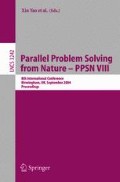Abstract
Multiple classifier systems (MCS) have become popular during the last decade. Self-generating neural tree (SGNT) is one of the suitable base-classifiers for MCS because of the simple setting and fast learning. However, the computation cost of the MCS increases in proportion to the number of SGNT. In an earlier paper, we proposed a pruning method for the structure of the SGNT in the MCS to reduce the computation cost. In this paper, we propose a novel pruning method for more effective processing and we call this model as self-organizing neural grove (SONG). The pruning method is constructed from an on-line pruning method and an off-line pruning method. Experiments have been conducted to compare the SONG with an unpruned MCS based on SGNT, an MCS based on C4.5, and k-nearest neighbor method. The results show that the SONG can improve its classification accuracy as well as reducing the computation cost.
Access this chapter
Tax calculation will be finalised at checkout
Purchases are for personal use only
Preview
Unable to display preview. Download preview PDF.
References
Han, J., Kamber, M.: Data Mining: Concepts and Techniques. Morgan Kaufmann Publishers, San Francisco (2000)
Breiman, L.: Bagging predictors. Machine Learning 24, 123–140 (1996)
Schapire, R.E.: The strength of weak learnability. Machine Learning 5(2), 197–227 (1990)
Quinlan, J.R.: Bagging, Boosting, and C4.5. In: Proc. the Thirteenth National Conference on Artificial Intelligence, Portland, OR, pp. 725–730 (1996)
Rätsch, G., Onoda, T., Müller, K.-R.: Soft margins for AdaBoost. Machine Learning 42(3), 287–320 (2001)
Bishop, C.M.: Neural Networks for Pattern Recognition. Oxford University Press, New York (1995)
Duda, R.O., Hart, P.E., Stork, D.G.: Pattern Classification, 2nd edn. John Wiley & Sons Inc., New York (2000)
Wen, W.X., Jennings, A., Liu, H.: Learning a neural tree. In: Proc. the International Joint Conference on Neural Networks, Beijing, China, vol. 2, pp. 751–756 (1992), This paper is available at ftp://ftp.cis.ohio-state.edu/pub/neuroprose/wen.sgnt-learn.ps.Z
Kohonen, T.: Self-Organizing Maps. Springer, Berlin (1995)
Inoue, H., Narihisa, H.: Improving generalization ability of self-generating neural networks through ensemble averaging. In: Terano, T., Chen, A.L.P. (eds.) PAKDD 2000. LNCS, vol. 1805, pp. 177–180. Springer, Heidelberg (2000)
Inoue, H., Narihisa, H.: Optimizing a multiple classifier system. In: Ishizuka, M., Sattar, A. (eds.) PRICAI 2002. LNCS (LNAI), vol. 2417, pp. 285–294. Springer, Heidelberg (2002)
Stone, M.: Cross-validation: A review. Math. Operationsforsch. Statist., Ser. Statistics 9(1), 127–139 (1978)
Quinlan, J.R.: C4.5: Programs for Machine Learning. Morgan Kaufmann, San Mateo (1993)
Blake, C.L., Merz, C.J.: UCI repository of machine learning databases, University of California, Irvine, Dept of Information and Computer Science (1998), Datasets is available at http://www.ics.uci.edu/~mlearn/MLRepository.html
Patrick, E.A., Fischer, F.P.: A generalized k-nearest neighbor rule. Information and Control 16(2), 128–152 (1970)
Zhang, B., Srihari, S.N.: Fast k-nearest neighbor classification using clusterbased trees. IEEE Trans. on Pattern and Machine Intelligence 26(4), 525–528 (2004)
Author information
Authors and Affiliations
Editor information
Editors and Affiliations
Rights and permissions
Copyright information
© 2004 Springer-Verlag Berlin Heidelberg
About this paper
Cite this paper
Inoue, H., Narihisa, H. (2004). Self-organizing Neural Grove: Efficient Multiple Classifier System Using Pruned Self-generating Neural Trees. In: Yao, X., et al. Parallel Problem Solving from Nature - PPSN VIII. PPSN 2004. Lecture Notes in Computer Science, vol 3242. Springer, Berlin, Heidelberg. https://doi.org/10.1007/978-3-540-30217-9_112
Download citation
DOI: https://doi.org/10.1007/978-3-540-30217-9_112
Publisher Name: Springer, Berlin, Heidelberg
Print ISBN: 978-3-540-23092-2
Online ISBN: 978-3-540-30217-9
eBook Packages: Springer Book Archive

